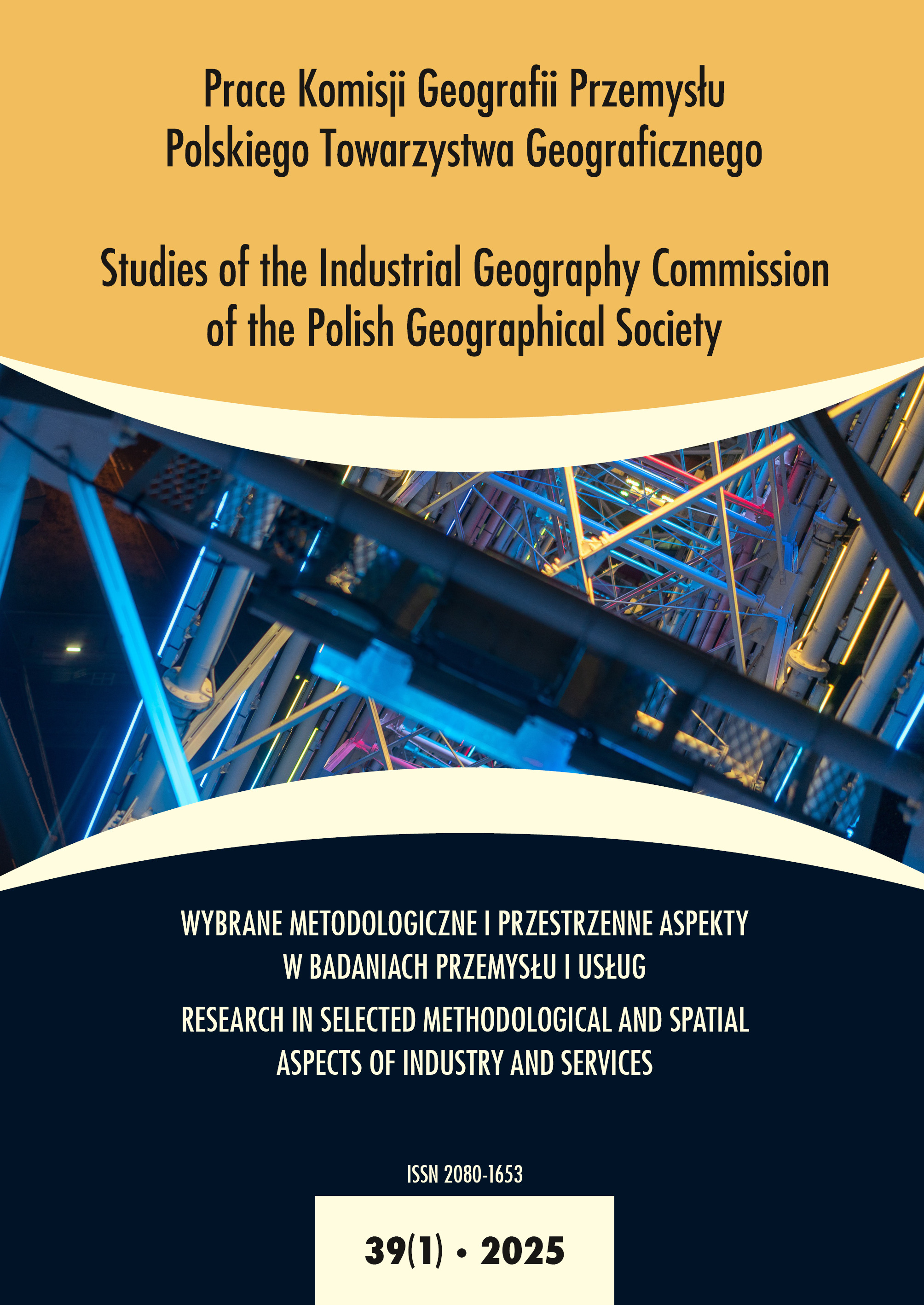Iterative flexible ranking of Poland’s provinces with respect to industry development level
DOI:
https://doi.org/10.24917/20801653.391.2Keywords:
aggregate index, industry, linear ordering, provinces, rankingAbstract
Linear ordering or ranking of administrative geographical units is widely found in statistical and regional literature. The selection of available variables to characterize general criteria is a key problem in such ordering and it is impossible to name the ideal list of variables for any practical problem as the selection is always somehow subjective. The method proposed in the article allows non-identical sets of variables to be used. The initial list of variables being standardized is the same for all but at each step one variable is eliminated – the one with the highest moduls of standardized value. The procedure combines two previously proposed methods – flexible ordering with step-wise elimination of extreme values (Sokołowski, Markowska, 2019), and iterative ordering with new standardization at each step (Sokołowski, Markowska, 2017). It is important to study how the ranking changes with each step of variable elimination – possibly different varia- bles are eliminated for different objects. The flexible ranking of Poland’s provinces, characterized by the level of industry, is presented as an illustrative example. The initial list of characteristics consists of 14 variables published in Poland’s Provinces Yearbook 2021 (GUS, 2022).
Downloads
Metrics
References
Abrahamowicz, M. (1985). Porządkowanie obiektów wielowymiarowych w przestrzeniach cech di‑ agnostycznych, praca doktorska, Akademia Ekonomiczna w Krakowie.
Bandura, R. (2008). A Survey of Composite Indices Measuring Country Performance: 2008 Update. UNDP/ODS Working Papers. New York
Bąk, A. (2016). Porządkowanie liniowe obiektów metodą Hellwiga i TOPSIS – analiza porównaw- cza. Prace Naukowe Uniwersytetu Ekonomicznego we Wrocławiu, 426, 22–32.
Bennett, M.K. (1937). On Measurement of Relative National Standards of Living. The Quarterly Journal of Economics, 51, 2, 317–336.
De Muro, P., Mazziotta, M., Pareto, A. (2009). Composite Indices for Multidimensional Development and Poverty: An Application to MDG Indicators. Social Indicators Research, 104, 1–18.
Dziechciarz, J. (2006). Wskaźniki syntetyczne. Polskie dokonania a doświadczenia międzynaro- dowe. W: A. Zeliaś (red.), Przestrzenno‑czasowe modelowanie i prognozowanie zjawisk gosp‑ odarczych. Kraków: Akademia Ekonomiczna w Krakowie, 239–252.
Freudenberg, M. (2003). Composite Indicators of Country Performance. A Critical Assessment.
OECD Science, Technology and Industry Working Papers, 2003/16.
GUS. (2022). Rocznik Statystyczny Województw 2021. Warszawa: Główny Urząd Statystyczny.
Handbook on Constructing Composite Indicators: Methodology and User Guide. (2008). OECD Publishing, Paris.
Hellwig, Z. (1968). Zastosowanie metody taksonomicznej do typologicznego podziału krajów ze względu na poziom ich rozwoju oraz zasoby i strukturę wykwalifikowanych kadr. Przegląd Statystyczny, 4, 307–327.
Shimura, M. (1973). Fuzzy Sets Concept in Rank-Ordering Objects. Journal of Mathematical Analysisi and Applications, 43, 717–733.
Sokołowski, A., Markowska, M. (2017). Iteracyjna metoda liniowego porządkowania obiektów wielocechowych. Przegląd Statystyczny, LXIV, 2, 153–161.
Sokołowski, A., Markowska, M. (2019). Elastyczne porządkowanie liniowe obiektów. XXVIII Konferencja Naukowa Sekcji Klasyfikacji i Analizy Danych Polskiego Towarzystwa Statystycznego. Szczecin: Uniwersytet Szczeciński, 18–20 września 2019 r.
Sokołowski, A., Markowska, M. (2021). Flexible Clustering. W: T. Chadjipadelis, B. Lausen,
A. Markos, T.R. Lee, A. Montanari, R. Nugent (red.), Data Analysis and Rationality in a Complex World. Cham: Springer International Publishing, 253–260.
Downloads
Published
How to Cite
Issue
Section
License
Copyright (c) 2025 Studies of the Industrial Geography Commission of the Polish Geographical Society

This work is licensed under a Creative Commons Attribution-NoDerivatives 4.0 International License.
Articles are published under the terms of the Creative Commons License (CC BY-ND 4.0; Attribution– NoDerivs).

